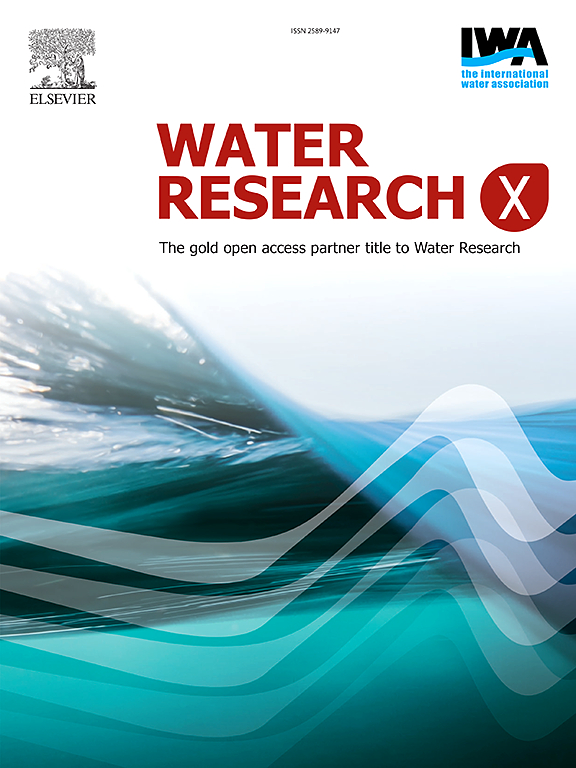Comparative analysis of synergistic effects of phosphorus enrichment and hydroxyapatite nucleation on anammox granular sludge
IF 8.2
2区 环境科学与生态学
Q1 ENGINEERING, ENVIRONMENTAL
引用次数: 0
Abstract
Combined nutrient removal and phosphorus recovery are pivotal for advancing sustainable wastewater treatment technologies. Despite the proven efficacy of anammox granular sludge systems in nutrient removal, the long-term structural development, microbial dynamics, and resource recovery potential of these systems remain insufficiently understood, particularly under municipal wastewater conditions at the microscopic level. Addressing this gap is critical to optimizing reactor performance and enhancing sustainability. In this study, we investigated the impact of phosphorus enrichment on granular sludge characteristics using two reactors. The phosphorus-free reactor (R1) facilitated the rapid formation of hollow granular sludge, with particle sizes growing rapidly—yet with significant variability—and total nitrogen (TN) removal efficiencies ranging between 74.86 % and 86.24 %. In contrast, the phosphorus-enriched reactor (R2) was supplemented to promote hydroxyapatite (HAP) nucleation, resulting in slower but more organized growth of dense granules with a narrower size distribution and consistently higher nitrogen removal efficiencies (75.17 %–91.97 %). Notably, phosphorus removal efficiency in R2 peaked when granules reached approximately 800 μm, attributable to HAP-mediated adsorption and precipitation. Furthermore, the relative abundance of key anammox bacteria, such as Candidatus Brocadia, increased dramatically from 1.28 % in R1 to 18.32 % in R2, while Denitratisoma also proliferated. Despite structural differences, similar amounts of floating sludge were observed in both reactors, likely due to gas entrapment and extracellular polymeric substances (EPS) production. These findings demonstrate that phosphorus enrichment not only enhances nitrogen removal and phosphorus recovery but also modulates microbial community composition and granule morphology.

厌氧氨氧化颗粒污泥中磷富集与羟基磷灰石成核协同效应的对比分析
营养物去除和磷回收相结合是推进可持续废水处理技术的关键。尽管厌氧颗粒污泥系统在去除营养物方面的功效已得到证实,但人们对这些系统的长期结构发展、微生物动态和资源回收潜力的了解仍然不够,特别是在城市污水条件下的微观层面。填补这一空白对于优化反应器性能和提高可持续性至关重要。在这项研究中,我们使用两个反应器研究了磷富集对颗粒污泥特性的影响。无磷反应器(R1)有利于中空颗粒污泥的快速形成,颗粒尺寸快速增长,但变化很大,总氮(TN)去除率介于 74.86 % 和 86.24 % 之间。相比之下,在富磷反应器(R2)中添加了促进羟基磷灰石(HAP)成核的添加剂,因此致密颗粒的生长速度较慢,但更有组织,粒度分布较窄,脱氮效率一直较高(75.17 %-91.97 %)。值得注意的是,当颗粒达到约 800 μm 时,R2 的除磷效率达到峰值,这归因于 HAP 介导的吸附和沉淀。此外,关键的厌氧菌(如 Candidatus Brocadia)的相对丰度从 R1 的 1.28% 急剧增加到 R2 的 18.32%,同时 Denitratisoma 也大量繁殖。尽管结构上存在差异,但在两个反应器中观察到的漂浮污泥数量相似,这可能是由于气体截留和胞外聚合物质(EPS)的产生。这些研究结果表明,磷富集不仅能提高脱氮和磷回收率,还能调节微生物群落组成和颗粒形态。
本文章由计算机程序翻译,如有差异,请以英文原文为准。
求助全文
约1分钟内获得全文
求助全文
来源期刊

Water Research X
Environmental Science-Water Science and Technology
CiteScore
12.30
自引率
1.30%
发文量
19
期刊介绍:
Water Research X is a sister journal of Water Research, which follows a Gold Open Access model. It focuses on publishing concise, letter-style research papers, visionary perspectives and editorials, as well as mini-reviews on emerging topics. The Journal invites contributions from researchers worldwide on various aspects of the science and technology related to the human impact on the water cycle, water quality, and its global management.
 求助内容:
求助内容: 应助结果提醒方式:
应助结果提醒方式:


